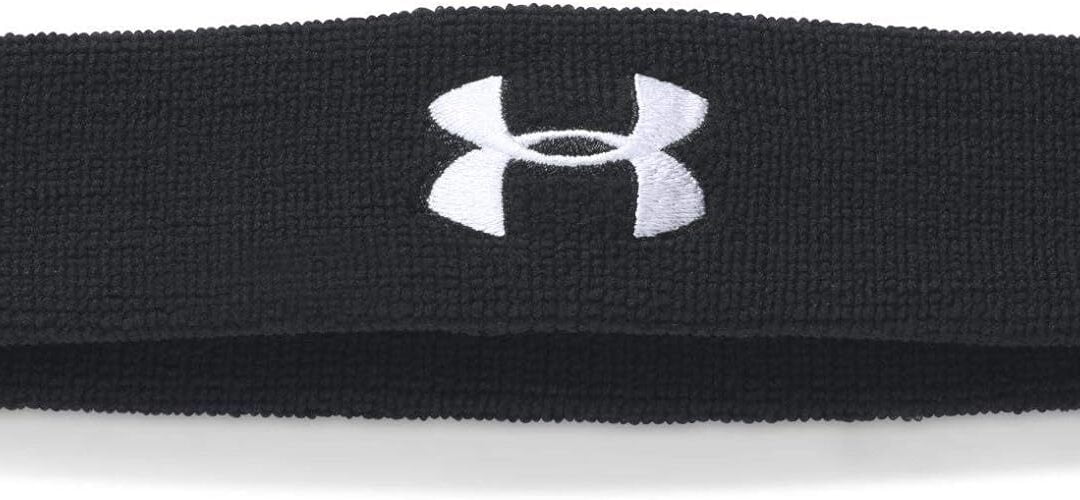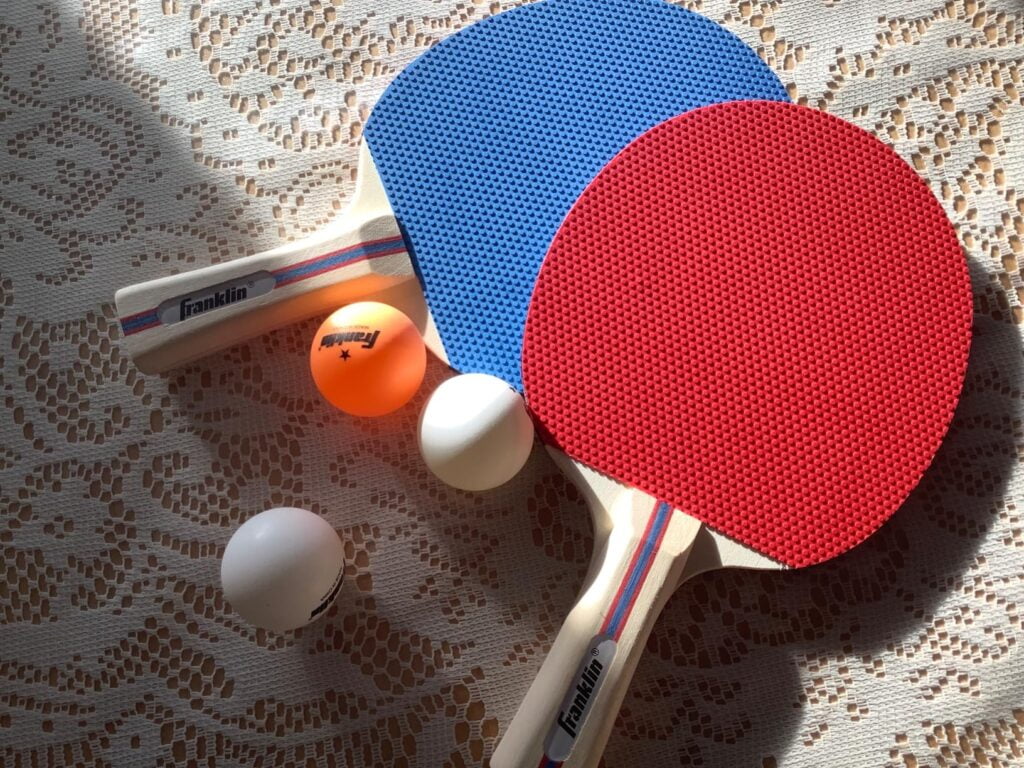Discover the benefits of sweatbands for your fitness routine. Enhance your performance and stay comfortable with these stylish and functional accessories.


Welcome to the ultimate guide for beginners on ping pong paddles! Ping pong, also known as table tennis, is a popular sport that requires skill, precision, and the right equipment. One of the most important pieces of equipment in table tennis is the paddle, also known as a racket. In this guide, we will explore everything you need to know about ping pong paddles, from the different types and materials to consider, to how to choose the right one for your playing style. So, let’s dive in and become paddle experts!
A ping pong paddle, also known as a table tennis racket, is the primary equipment used to play the sport. It consists of a wooden blade with a layer of rubber on each side. The rubber can be smooth or have pimples, depending on the player’s preference and playing style. The paddle is used to hit the ball back and forth across the table, with the goal of scoring points by making the ball bounce twice on the opponent’s side or forcing them to make an error.
All-round paddles are designed for players who have a balanced playing style. They offer a good balance of control, speed, and spin, making them suitable for both defensive and offensive play. These paddles are ideal for beginners who are still developing their playing style and want a versatile paddle that can adapt to different situations.
Offensive paddles are designed for players who prefer an aggressive playing style focused on powerful shots and fast-paced gameplay. These paddles are typically lighter and have thicker, harder rubber for increased speed and spin. They are ideal for players who have good control and want to maximize their attacking capabilities.
Defensive paddles are designed for players who prefer a more defensive playing style focused on control and consistency. These paddles have softer rubber with more grip, allowing players to generate more spin and control the ball’s trajectory. They are ideal for players who rely on their defensive skills and want to keep the ball in play for longer rallies.
Penhold paddles are designed for players who use the penhold grip, a grip style where the paddle is held between the thumb and forefinger, resembling a pen. These paddles have a shorter handle and a larger blade surface area to accommodate the unique grip style. They are popular among Asian players and offer a different playing experience compared to the more common shakehand grip.

The blade is the wooden part of the paddle that determines its overall characteristics, such as speed, control, and weight. The blade can be made from different types of wood, each with its own properties. Some common types of wood used in ping pong paddle blades include:
The rubber is the outer layer of the paddle that comes into contact with the ball. It plays a crucial role in generating spin and controlling the ball’s trajectory. There are two main types of rubber used in ping pong paddles:

Your playing style is the most important factor to consider when choosing a ping pong paddle. Determine whether you are an offensive, defensive, or all-round player, and select a paddle that complements your style. Consider the speed, control, and spin characteristics of the paddle to ensure it aligns with your playing preferences.
Your skill level also plays a role in choosing the right paddle. Beginners may benefit from a paddle with more control and forgiveness, while advanced players may prefer a paddle with more speed and spin potential. It’s important to choose a paddle that matches your skill level to optimize your performance on the table.
Consider your budget when selecting a ping pong paddle. Paddles can range in price from affordable options for beginners to high-end professional paddles. Determine your budget and look for paddles that offer the best value for money within your price range.
Your grip style, whether it’s shakehand or penhold, will also influence your choice of paddle. Ensure that the paddle you choose is designed for your grip style and provides a comfortable grip that allows you to execute your shots effectively.

Choosing the right ping pong paddle can be a daunting task, especially for beginners. Here are some steps you can follow to make the process easier:
First, determine your playing style by considering whether you are an offensive, defensive, or all-round player. This will help you narrow down the options and select a paddle that suits your style.
Next, consider your skill level. Beginners may benefit from a paddle with more control and forgiveness, while advanced players may prefer a paddle with more speed and spin potential. Choose a paddle that matches your skill level to optimize your performance.
Set a budget for your paddle purchase. Determine how much you are willing to spend and look for paddles within that price range. Remember to consider the value you will be getting for your money, rather than just focusing on the price.
If possible, try out different paddles before making a decision. This will allow you to get a feel for the paddle’s characteristics and determine which one suits you best. Many table tennis clubs or sports stores have paddles available for testing.
If you’re still unsure about which paddle to choose, seek advice from experienced players or coaches. They can provide valuable insights and recommendations based on their knowledge and experience in the sport.

To ensure that your ping pong paddle performs at its best and lasts longer, proper maintenance is essential. Here are some tips for maintaining your paddle:
Clean your paddle regularly to remove any dirt or debris that may accumulate on the rubber surface. Use a soft cloth or sponge dampened with water or a mild cleaning solution specifically designed for table tennis rubbers. Gently wipe the rubber surface in a circular motion, taking care not to damage the rubber.
Store your paddle in a protective case or cover when not in use. This will prevent the rubber from coming into contact with other surfaces and getting damaged. Avoid storing the paddle in extreme temperatures or humid environments, as this can affect the performance of the rubber.
Avoid exposing your paddle to excessive moisture, as this can cause the rubber to deteriorate. Wipe off any sweat or moisture from the rubber surface after each use to prevent damage. Additionally, avoid using the paddle in wet or damp conditions, as this can affect the grip and performance of the rubber.
If the rubber on your paddle becomes worn out or loses its grip, consider replacing it. Worn-out rubber can significantly impact your performance, and replacing it can restore the paddle’s performance. Consult with a professional or experienced player to determine the best type of rubber for your playing style.
When choosing a ping pong paddle, it’s important to consider the type of rubber used on the blade. The rubber plays a crucial role in generating spin, control, and speed. Here are the different types of rubber you can choose from:
Smooth rubber is the most common type of rubber used in ping pong paddles. It has a smooth surface without any pimples or texture. Smooth rubber allows for better control and spin generation. It is suitable for players who prefer an all-round playing style and want to have a good balance of control and spin in their shots.
Pimpled rubber is divided into two categories: short pips and long pips. Short pips rubber has small, stubby pimples on the surface, while long pips rubber has longer, more flexible pimples. Pimpled rubber provides a different playing experience compared to smooth rubber.
Short Pips Rubber
Short pips rubber offers a unique combination of speed and control. It provides a more direct and faster ball response compared to smooth rubber. Short pips rubber is suitable for players who have an aggressive playing style and prefer a faster pace of play. It allows for quick counter-attacks and powerful shots.
Long Pips Rubber
Long pips rubber provides more disruptive effects on the ball. It can create variations in spin and trajectory, making it difficult for opponents to anticipate the ball’s behavior. Long pips rubber is suitable for players who prefer a defensive playing style and want to rely on deception and unpredictability to win points. It can be challenging to control for beginners, but with practice, it can be a powerful weapon.
In addition to the type of rubber, the thickness of the sponge underneath the rubber also affects the paddle’s characteristics. The sponge provides the necessary cushioning and allows for better ball control. Here are the different sponge thicknesses you can choose from:
Thin Sponge
A paddle with a thin sponge (1.0mm-1.5mm) offers better control and precision. It allows players to have a better feel for the ball and make more controlled shots. Thin sponge is suitable for players who prioritize control over speed and prefer a more defensive or all-round playing style.
Medium Sponge
A paddle with a medium sponge (1.8mm-2.0mm) strikes a balance between control and speed. It provides good control while still offering enough speed for offensive shots. Medium sponge is suitable for players who want a versatile paddle that can adapt to different playing styles.
Thick Sponge
A paddle with a thick sponge (2.1mm or thicker) offers more speed and power. It allows for faster shots and more spin generation. Thick sponge is suitable for players who have an aggressive playing style and prioritize speed and power over control.

When choosing a ping pong paddle, it’s important to find the right combination of rubber and sponge that suits your playing style. Here are some factors to consider:
Consider your playing style and the characteristics you prioritize. If you prefer a defensive or all-round playing style, a paddle with smooth rubber and a thin to medium sponge may be more suitable. If you have an aggressive playing style, a paddle with short pips rubber and a medium to thick sponge may be more appropriate.
Your skill level also affects the rubber and sponge combination you choose. Beginners may benefit from a paddle with more control and forgiveness, such as smooth rubber with a thin sponge. Advanced players may prefer a paddle with more speed and spin potential, such as short pips rubber with a medium to thick sponge.
Ultimately, personal preference plays a significant role in choosing the right rubber and sponge combination. Some players may prefer a softer sponge for better touch and control, while others may prefer a harder sponge for more power and speed. Experiment with different combinations to find the one that feels most comfortable and suits your playing style.
“I purchased a ping pong paddle for my son, and he absolutely loves it! It has improved his game and he’s now able to play at a higher level. The paddle is durable and offers great control and spin. Highly recommend!” – John D.
“I’ve been using a ping pong paddle for a few months now, and I’ve noticed a significant improvement in my game. The paddle feels great in my hand and offers excellent control. It’s definitely worth investing in a good quality paddle if you’re serious about improving your skills.” – Sarah M.
“I recently switched to a new ping pong paddle, and it’s made a huge difference in my gameplay. The paddle provides a lot of speed and spin, allowing me to execute powerful shots. I’m very happy with my purchase and would recommend it to anyone looking to up their game.” – Michael R.
No, it’s recommended to use a paddle specifically designed for ping pong to ensure optimal performance. Regular racket paddles may not provide the necessary spin and control for table tennis.
Smooth rubber offers good spin and control, allowing for a versatile playing style. Pimpled rubber, on the other hand, can be further classified into short pips and long pips. Short pips rubber offers a combination of speed and control, while long pips rubber provides more disruptive effects for defensive play.
The frequency of rubber replacement depends on various factors, such as playing frequency and intensity. On average, rubber can last for several months to a couple of years. However, if you notice a significant decrease in performance or the rubber becomes worn out, it’s time to consider replacing it.
Some paddles are designed to be more versatile and can accommodate different playing styles. However, if you have a specific playing style, it’s recommended to choose a paddle that is tailored to your style to maximize your performance.

A ping pong paddle is an essential piece of equipment for anyone interested in playing table tennis. It offers a wide range of benefits, such as improved performance, increased control, and the ability to generate spin. By considering factors such as playing style, skill level, and budget, you can choose the right paddle that suits your needs. Proper maintenance and care will ensure the longevity and optimal performance of your paddle. So, grab your paddle, hit the table, and enjoy the exciting sport of ping pong!
Choosing the right rubber and sponge combination is crucial for optimizing your performance in table tennis. Consider the type of rubber and sponge that align with your playing style, skill level, and personal preference. Experiment with different combinations to find the one that offers the right balance of control, speed, and spin for your game. With the right rubber and sponge combination, you’ll be able to take your game to the next level and enjoy the sport of ping pong to the fullest!
Choosing the right ping pong paddle is essential for any player, whether you’re a beginner or an experienced player. Consider your playing style, skill level, budget, and grip style when selecting a paddle. Try out different paddles if possible and seek expert advice to make an informed decision. Remember to maintain your paddle properly to ensure its longevity and performance. With the right paddle in hand, you’ll be ready to take on the table tennis table with confidence and skill!